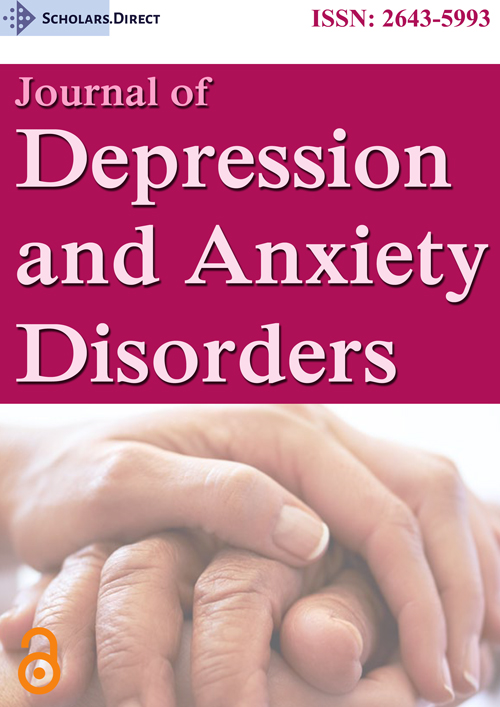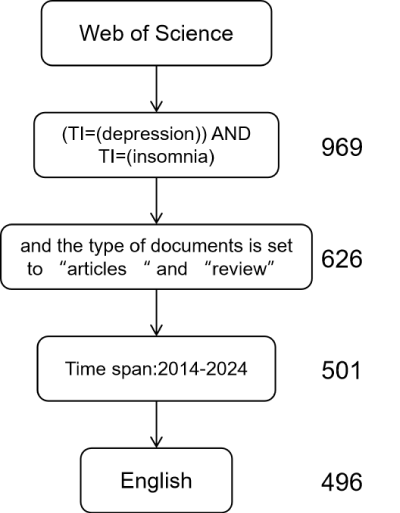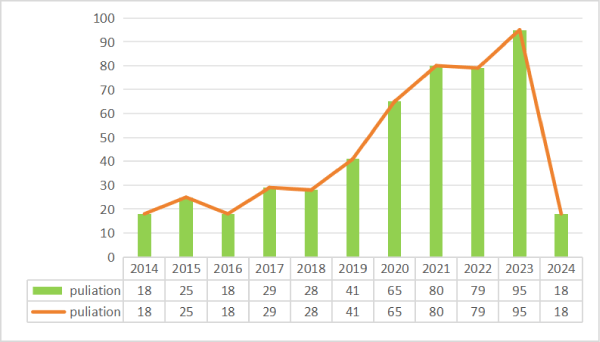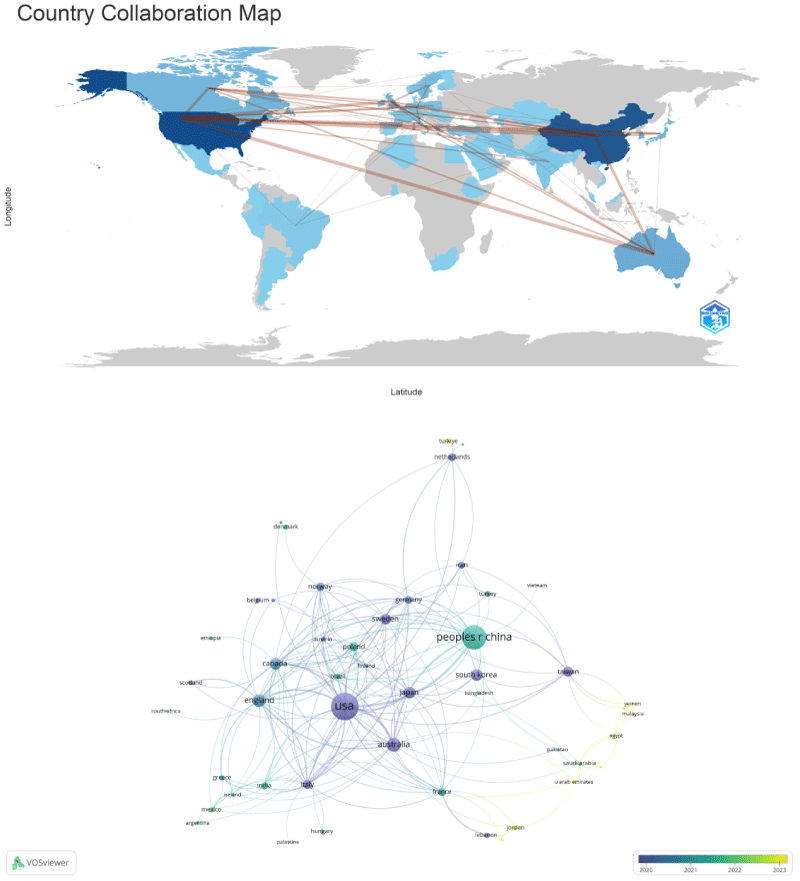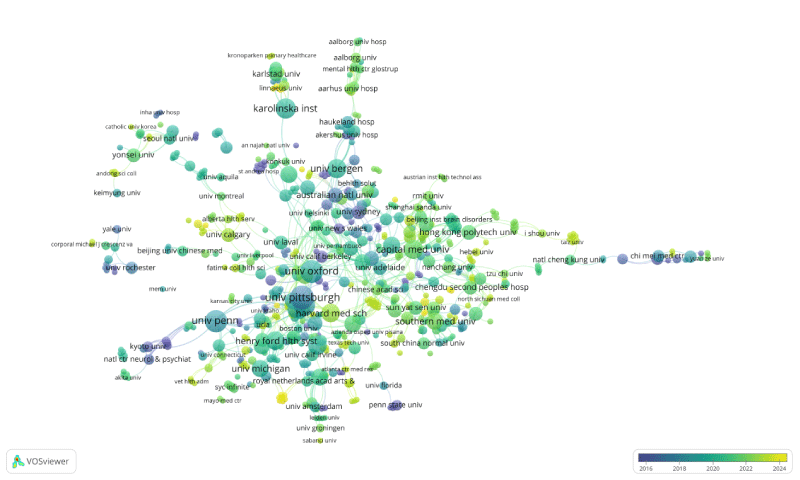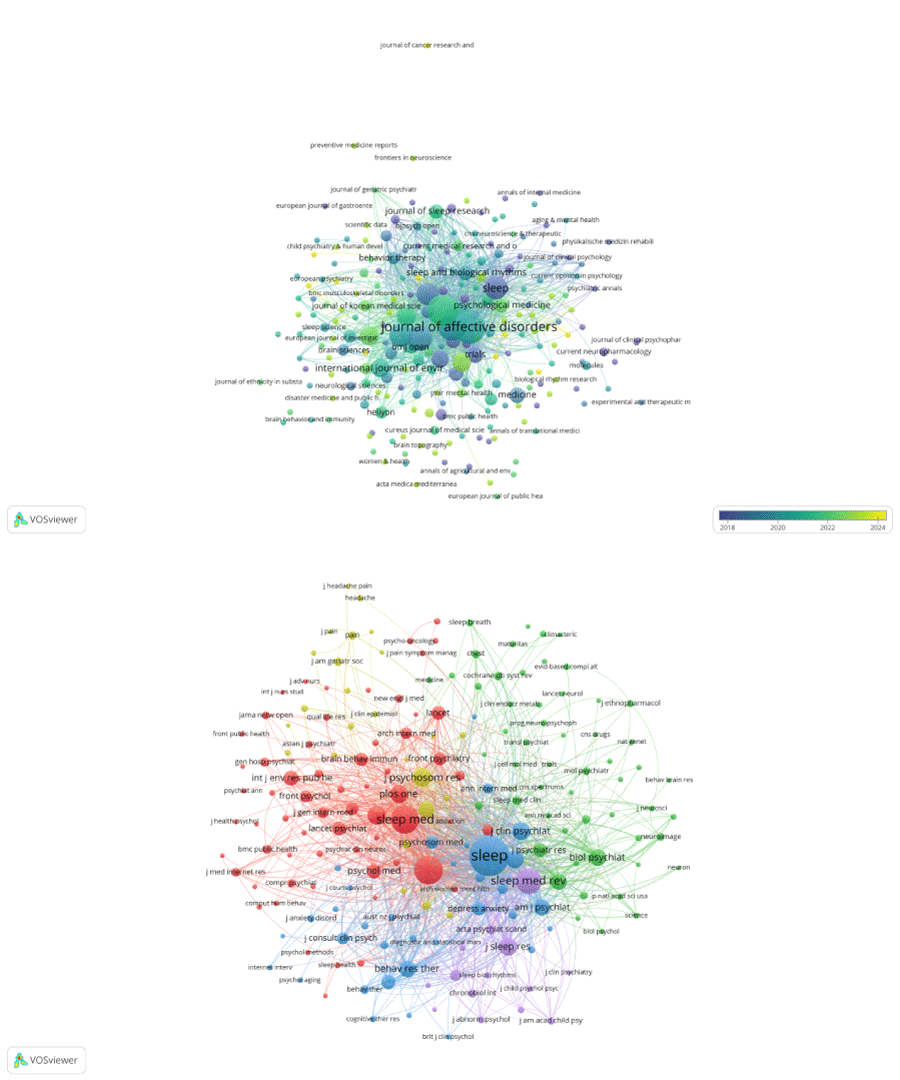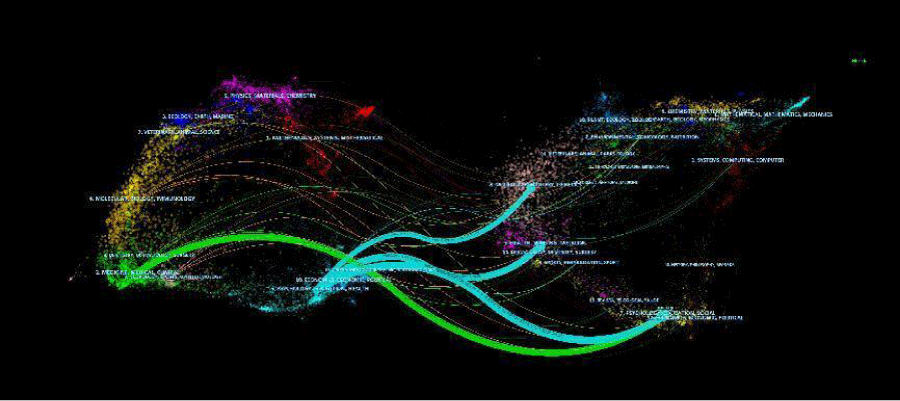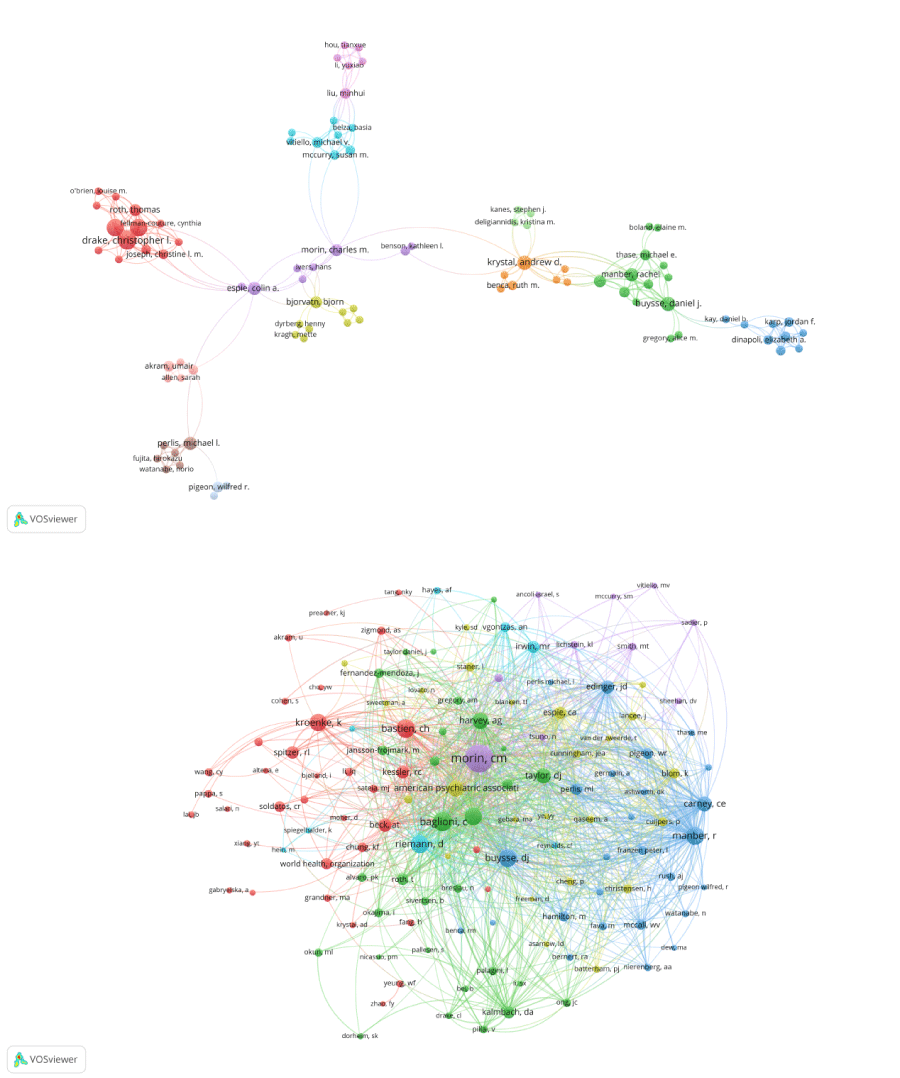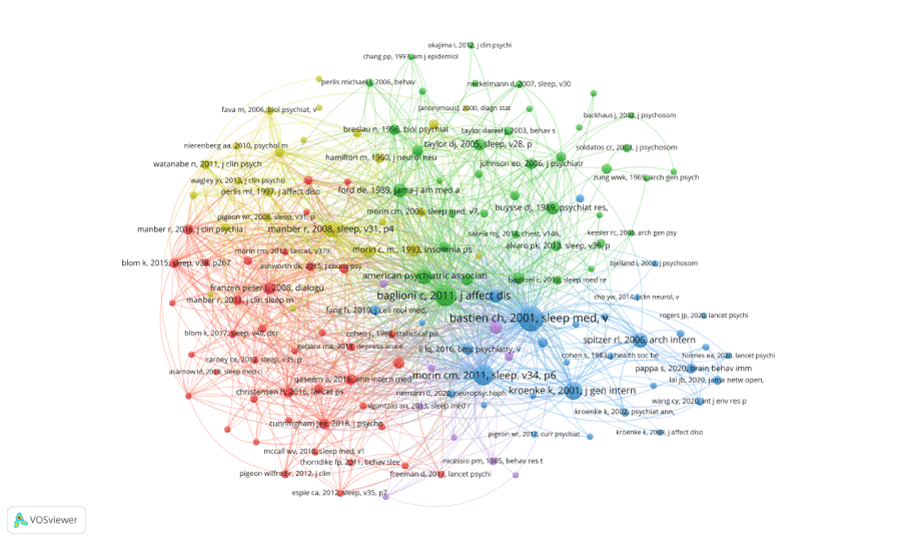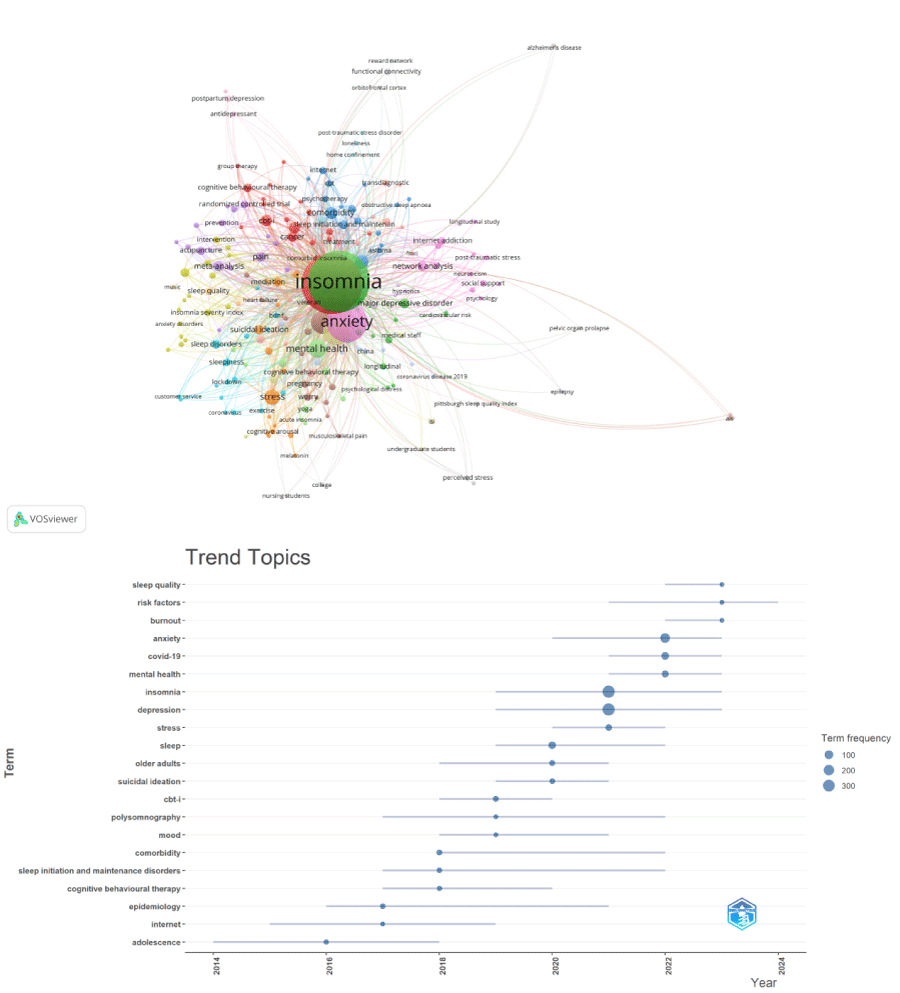A Bibliometric Analysis of Insomnia in Depression
Abstract
Background : Insomnia significantly impairs the quality of life of patients with depression and has increasingly garnered the attention of scholars. It is a major focus of current research, characterized by a high degree of exploratory nature and of significant importance to human health. The present study aims to analyze the current state of research on the relationship between depression and insomnia through the method of bibliometrics. Utilizing software, we have examined popular research questions and directions, revealing the developmental trends and research frontiers in this field.
Method: A literature search was conducted on the Web of Science Core Collection (WoSCC) database for publications related to depression and insomnia from 2014 to 2024. Bibliometric analysis was performed using VOSviewer, CiteSpace, and the R package "bibliometrix".
Results: A total of 496 articles were retrieved, originating from 57 countries, with a publication volume of 990 from major research institutions. The Journal of Affective Disorders was the most prolific in this field, while Sleep was the most cited journal. Christopher L. Drake emerged as the author with the highest publication volume, and CM Morin was the most cited author. Insomnia and depression were the main topics of interest in this field. Sleep quality and anxiety were identified as the primary keywords.
Conclusion: This is the first bibliometric study that has summarized the research trends and developments concerning the relationship between depression and insomnia. The information identified the latest research frontiers and hot topics, providing references for further studies on depression.
Keywords
Bibliometrics, Depression, Insomnia, CiteSpace, VOSviewers
Introduction
Depression is one of the most common mental health issues, characterized by persistent sadness, fatigue, and anhedonia (i.e., lack of interest or pleasure) [1].
Sleep disorders (SDs) refer to symptoms of abnormal sleep quantity, unusual behaviors during sleep, and circadian rhythm disruptions (the alternating patterns of sleep and wakefulness) [2,3]. SDs can be caused by a variety of factors and are closely related to an individual's health status. They are prevalent among the elderly, with an increased incidence due to aging, illness, medication treatments, and psychological factors [4]. SDs can lead to adverse outcomes such as memory loss, physical decline, cognitive impairments [5], and an increased risk of falls [6].
Adequate and quality sleep is beneficial for the recovery process from physical illnesses and is essential for performing daily activities. Moreover, it can improve the quality of life for patients with depression [7], reduce negative emotions, and enhance physical health [8]. There are various methods to improve sleep, including exercise, diet, music, etc., with exercise being one of the most significant. Studies have shown that physical activity can extend sleep duration, improve heart rate, reduce psychological distress, and enhance sleep quality [9].
Bibliometrics is a method of literature analysis that examines the output and status of publications in a specific research field from both quantitative and qualitative perspectives [9,10]. During the analysis process, detailed information about authors, keywords, journals, countries, institutions, and references can be obtained Bibliometric tools such as CiteSpace [11], VoSviewer [12], the R package "bibliometrix" [13], and HistCite [14] are commonly used to visualize the results of literature analysis. These tools have been widely applied in the medical field, including oncology [15,16] orthopedics [17], thoracic surgery [18], and rheumatology [19], but there is a lack of bibliometric research on the relationship between depression and insomnia.
Search Strategy
On April 20, 2024, we conducted a literature search in the Web of Science Core Collection (WoSCC) database ( https://www.webofscience.com/wos/woscc/basic-search . The search formula was (TI = (depression)) AND TI = (insomnia) and the document types were set to "articles" and "reviews" AND LA = (English), covering the period from 2014 to 2024.
Figure 1: Publications screening flowchart.
Data Analysis
VOSviewer (version 1.6.18) is a bibliometric analysis software that can extract key information from a multitude of publications [20], and is commonly used to construct networks of collaboration, co-citation, and co-occurrence [21,22] In our study, the software primarily conducted the following analyses: analysis of countries and institutions, analysis of joumals and co-cited journals, analysis of authors and co-cited authors, and keyword co-occurrence analysis. In the maps generated by voSviewer, a node represents an item, such as a country, institution, journal, or author. The size and color of a node indicate the quantity and classification of these items, respectively. The thickness of the lines between nodes reflects the degree of collaboration or co-citation among these items [19,23] CiteSpace (version 6.1.R1) is another software for bibliometric analysis and visualization developed by Professor Chen C [11,22] In our research, we utilized CiteSpace to create dual-map overlays of journals.
Quantitative analysis of publication
According to our search strategy, a total of 496 studies on depression and insomnia have been identified over the past decade. The annual publication rate initially showed a slow increase (2014-2018), followed by a rapid increase (2018-2021), and then a slow increase again (2021-2023).
Figure 2: Publication trends over time.
Country and institutional analysis
These publications originate from 57 countries and 990 institutions. The top ten are distributed across Asia, North America, and Europe, with a primary distribution in Asia (=4) and Europe (=3) (Table 1). Among them, the United States has the highest number of publications (=146, 29.4%), followed by China (=116, 23.4%), Australia (=38, 7.7%), and the United Kingdom (=32, 6.5%). Publications from the United States and China together account for more than half of the total (52.8%). Subsequently, we filtered and visualized the data from the 990 institutions and constructed a collaborative network based on the number of publications and relationships for each country (Figure 3). Notably, there is considerable active collaboration between different countries. For example, China has close collaborations with the United States, Canada, Australia, and Japan; the United States also has active collaborations with Canada and Australia.
The top ten financial institutions are located in five countries, with half of them situated in the United States. The three institutions that published the most relevant papers are: Harvard University (=15, 3%), Univ Oxford (=14, 2.8%), and the University of Pennsylvania (=13, 2.6%). Following this, we visualized 990 institutions with a minimum publication count of one and constructed a collaborative network based on the number of publications and relationships for each institution (Figure 4). As shown in Figure 4, the University of Pittsburgh, Oxford University, and the University of Pennsylvania have very close collaborations with Harvard University.
Journals and Co-Cited journals
A total of 234 papers addressing depression and insomnia were published in the literature. The Journal of Affective Disorders published the highest number of papers (=25, 5%), followed by Frontiers in Psychiatry (=23, 4.6%), and Sleep Medicine (=19, 3.8%). Among the top 15 journals, the one with the highest impact factor was Psychiatry Research (IF=11.3), followed by the Journal of Affective Disorders (IF=6.6). Subsequently, we created a journal network map (Figure 5A). Figure 5A illustrates that the Journal of Affective Disorders has a positive citation relationship with BMC Psychiatry, Behavioral Sleep Medicine, and others.
As shown in Table 2, among the top 15 most-cited journals, four journals were cited more than 500 times, with Sleep having the highest number of citations (=1396), followed by J Affect Disord (=719), Sleep Med (=694), and Sleep Med Rev (=594). Additionally, JAMA-J Am Med Assoc had the highest impact factor (IF=56.3), followed by Arch Gen Psychiatry (IF=25.8). A co-citation network was constructed after filtering for journals with a minimum co-citation count of 20 (Figure 5B). As depicted in Figure 5B, there is a positive co-citation relationship between Sleep and J Affect Disord, among others.
The dual-map overlay of journals shows the citation relationships between journals and co-cited journals, with clusters of citing journals on the left and clusters of cited journals on the right. As shown in Figure 6, the green and blue pathways represent the primary citation trajectories.
Authors and Co-Cited authors
A total of 2618 authors participated in research on depression and insomnia. Among the top 10 authors, 8 published more than 5 papers (Table 3). We constructed a collaboration network based on authors who had published 2 or more papers (Figure 7A). The nodes of Drake, Christopher L., Cheng, Philip, Kalmbach, David A., Buysse, Daniel J., and Krystal, Andrew D. were the largest due to their having the most publications. Additionally, we observed close collaborations between multiple authors. For instance, Espie, Colin A. closely collaborated with Drake, Christopher L., Bjorvatn, Bjorn, Gardani, Maria, and others.
Out of the 12,940 cited authors, 11 were co-cited more than 100 times. The most co-cited author was Morin, CM (=345), followed by Baglioni, C (=157) and Bastien, CH (=149). After filtering for a minimum of 15 co-citations per author, a co-citation network map was drawn (Figure 7B). As shown in Figure 7B, there were also active collaborations between different co-cited authors, such as Morin, CM and Bastien, CH; Buysse, DJ and Riemann, D.
Co-Cited references
Over the past decade, there have been 20,422 studies on depression and insomnia. Among the top 10 co-cited references (Table 4), all were cited at least 42 times, with 7 references receiving more than 50 citations. We selected references with a co-citation count of 10 or higher to construct a co-citation network map (Figure 8). According to Figure 8, "Bastien CH, 2001, Sleep Med" shows active co-citation relationships with "Morin CM, 2011, Sleep", "Kroenke K, 2001, J Gen Intern Med", and "Spitzer RL, 2006, Arch Intern Med", among others.
Hotspots and Frontiers
Through co-occurrence analysis of keywords, one can rapidly identify research hotspots within a given field. Table 5 presents the top 20 high-frequency keywords in studies on depression and insomnia. Among these, the terms "insomnia," "depression," "anxiety," and "COVID-19" appeared more than 50 times, indicating they are the primary research directions in the context of depression and insomnia.
We filtered out keywords that appeared two or more times and conducted a clustering analysis using VOSviewer (Figure 9A). The trend analysis of keyword themes (Figure 9B) reveals that from 2018 to 2020, the popular themes were "sleep," "older adults," and "suicidal ideation." For the period from 2021 to 2023, the prevalent themes were "mental health" and "insomnia." Between 2022 and 2023, the trending themes included "sleep quality" and "anxiety."
Discussion
The number of papers published in recent years reflects the trend in sleep research related to depression. Figure 2 indicates that sleep studies in patients with depression have increasingly garnered widespread attention from scholars. As the body of literature in this area continues to grow, a deeper understanding of the sleep patterns in patients with depression is expected to develop concurrently.
The Journal of Affective Disorders ranks first in terms of the number of articles published. This suggests that the journal holds a significant academic advantage and influence in the research of sleep in patients with depression. The main research directions in sleep are behavioral science, clinical neurology, neuroscience, and psychiatry. The top three journals are all within the field of psychiatry. Psychiatry Research primarily focuses on geriatrics. This journal ranks first in impact factor, indicating that the academic papers published in it are of high quality.
The frequency of citations is an important indicator for evaluating the impact and quality of papers, and it is used to assess the influence and quality level of scientific research from different countries, institutions, or individuals [24,25]. The most frequently cited article is "Validation of the Insomnia Severity Index as an outcome measure for insomnia research." This article focuses on reporting the clinical validation of the Insomnia Severity Index (ISI) as a brief screening tool and outcome measure for insomnia in therapeutic research.
The national-regional distribution map provides a clearer depiction of the scientific disparities and distributions in sleep research across countries. The United States has published significantly more papers than any other country, indicating its leading level of research and influence in the field of sleep studies. And the United States has engaged in collaborative exchanges with most countries. Academic exchanges between nations and regions have become more frequent and closer, fostering a positive and ongoing process in the development of research on depression-related sleep issues.
The University of Pittsburgh ranks first in the number of published papers, highlighting its outstanding contributions to this field. The institutional collaboration map reveals an active network of cooperation among some American research institutions and others, offering more opportunities for academic exchange and learning.
The author collaboration map provides a snapshot of the state of research in the field and the collaborations among researchers (Figure 7). It offers a visual representation of more prolific authors. Studying high-output authors is more conducive to grasping new trends in sleep research related to depression. Moreover, an author's academic impact can be assessed by the number of publications and the frequency of citations [26]. Research on sleep in patients with depression reveals close cooperation among researchers, as well as opportunities for mutual learning and exchange. Such collaboration is beneficial for in-depth development in this field.
Keywords serve as an advanced summary of a paper's theme, reflecting the research direction and value of the article. Analyzing keywords in the literature related to a field helps explore research hotspots and developmental trends [27] Keyword co-occurrence refers to the appearance of different keywords within the same literature [28] A high frequency of keywords reflects research hotspots and the developmental direction of the field [29] This analysis indicates that recent research topics related to depression sleep are becoming more concentrated and closely connected. Keyword analysis reveals that major factors influencing insomnia in depression include anxiety, mental health, stress, etc. Factors such as quality of life also lead to a higher proportion of insomnia among patients with depression [30] Chronic poor sleep is a primary etiology in the development of depressive symptoms. Adults with depressive symptoms who suffer from Sleep Disorders (SDs) may experience more severe symptoms, making their treatment more challenging [31] Maintaining physical and mental activity and a positive emotional state are effective strategies against depression.
Conclusion
The focus of this bibliometric study is on the insomnia experienced by patients with depression, providing detailed information on relevant literature from a global perspective through CiteSpace visualization. We observed an annual increase in the number of studies in the field of insomnia associated with depression, indicating that this research area has significant growth potential. The main institutions involved in this field are universities. Research hotspots revolve around insomnia, sleep quality, depression, anxiety, and other related topics. Research subjects include mental health, stress, and more. In summary, this study predicts future research trends in insomnia among patients with depression through visual analysis, offering valuable insights into the research frontiers and hotspots of the field. Concurrently, the study of insomnia in patients with depression is highly exploratory and merits further development.
Disclosure statement
No potential conflict of interest was reported by the author(s).
References
- World Health Organization (2020) World Health Organization Depression. 2020.
- Chokroverty S (2010) Overview of sleep & sleep disorders. Indian J Med Res 131: 126-140.
- Nadorff M, Drapeau C, Pigeon W (2018) Psychiatric illness and sleep in older adults comorbidity and opportunities for intervention. Sleep Med Clin 13: 81-91.
- Miner B, Kryger MH (2017) Sleep in the aging population. Sleep Med Clin 12: 31-38.
- Kondo R, Miyano I, Lee S, Shimada H, Kitaoka H (2021) Association between self-reported night sleep duration and cognitive function among older adults with intact global cognition. Int J Geriatr Psychiatry 36: 766-774.
- Tufan A, Ilhan B, Bahat G, Karan MA (2017) An under-diagnosed geriatric syndrome: sleep disorders among older adults. Afr Health Sci 17: 436-444.
- Stallings D, Lach H, Lorenz R (2022) Circadian rhythm and quality of life in older adults. Appl Nurs Res 66: 151457.
- Gothe NP, Ehlers DK, Salerno EA, Fanning J, Kramer AF, et al. (2020) Physical activity, sleep and quality of life in older adults: influence of physical, mental and social well-being. Behav Sleep Med 18: 797-808.
- Stefan L, Vrgoc G, Rupcic T, Sporis G, Sekulic D (2018) Sleep duration and sleep quality are associated with physical activity in elderly people living in nursing homes. Int J Environ Res Public Health 15: 2512.
- Wang B, Xing D, Zhu Y, Dong S, Zhao B (2019) The State of Exosomes Research: A Global Visualized Analysis. BioMed Res Int 2019:1495130.
- Ke L, Lu C, Shen R, Lu T, Ma B, et al. (2020) Knowledge Mapping of DrugInduced Liver Injury: A Scientometric Investigation (2010-2019). Front Pharmacol 11: 842.
- Synnestvedt MB, Chen C, Holmes JH (2005) CiteSpace II: Visualization and knowledge discovery in bibliographic databases. AMIA Annu Symp Proc 2005: 724-728.
- Yeung AWK, Tzvetkov NT, Balacheva AA, Georgieva MG, Gan RY, et al. (2020) Lignans: Quantitative Analysis of the Research Literature. Front Pharmacol 11: 37.
- Li C, Ojeda-Thies C, Renz N, Margaryan D, Perka C, et al. (2020) The global state of clinical research and trends in periprosthetic joint infection: A bibliometric analysis. Int J Infect Dis 96: 696-709.
- Lu C, Liu M, Shang W, Yuan Y, Li M, et al. (2020) Knowledge mapping of angelica sinensis (Oliv.) Diels (Danggui) research: A scientometric study. Front Pharmacol 11: 294.
- Shi S, Gao Y, Liu M, Bu Y, Wu J, et al. (2021) Top 100 most-cited articles on exosomes in the field of cancer: A bibliometric analysis and evidence mapping. Clin Exp Med 21: 181-194.
- Teles RHG, Yano RS, Villarinho NJ, Yamagata AS, Jaeger RG, et al. (2021) Advances in Breast Cancer Management and Extracellular Vesicle Research, a Bibliometric Analysis. Curr Oncol 28: 4504-4520.
- Wu H, Cheng K, Tong L, Wang Y, Yang W, et al. (2022) Knowledge structure and emerging trends on osteonecrosis of the femoral head: A bibliometric and visualized study. J Orthop Surg Res 17: 194.
- Oo S, Fan KH, Khare Y, Fan KS, Chan J, et al. (2020) Top 100 cited manuscripts in aortic valve replacement: A bibliometric analysis. J Card Surg 35: 2943-2949.
- Wu H, Cheng K, Guo Q, Yang W, Tong L, et al. (2021) Mapping Knowledge Structure and Themes Trends of Osteoporosis in Rheumatoid Arthritis: A Bibliometric Analysis. Front Med (Lausanne) 8: 787228.
- van Eck NJ, Waltman L (2010) Software Survey: VOSviewer, a Computer Program for Bibliometric Mapping. Scientometrics 84: 523-538.
- Yeung AWK, Mozos I (2020) The innovative and sustainable use of dental panoramic radiographs for the detection of osteoporosis. Int J Environ Res Pub4lic Health 17: 2449.
- Pan X, Yan E, Cui M, Hua W (2018) Examining the usage, citation, and diffusion patterns of bibliometric mapping software: A comparative study of three tools. J Informetrics 12: 481-493.
- Zhang XL, Zheng Y, Xia ML, Wu YN, Liu XJ, et al. (2020) Knowledge Domain and Emerging Trends in Vinegar Research: A Bibliometric Review of the Literature From WoSCC. Foods 9: 166.
- Chen Y, Chen C, Liu Z, Hu Z, Wang X (2015) Methodological functions of CiteSpace knowledge graphs. Scientol Res 33: 242-253.
- Zhao D (2012) Exploring some issues of scientific knowledge mapping based on CiteSpace. Intell Theory Practice 35: 56-58.
- Wang Y, Shou X, Wu Y, Fan Z, Cui J, et al. (2022) Relationships between obstructive sleep apnea and cardiovascular disease: A bibliometric analysis (2010-2021). Med Sci Monit 28: 933448.
- Li B (2019) Web of science-based analysis of the research posture of high intensity interval training in sports science. Sports Sci Technol 40:13-14.
- Zhao J (2014) A study on CiteSpace visualization process and analysis paradigm. Knowl Econ 328: 105-107.
- Chen C, Chen Y, Horowitz M, Hou H, Liu Z, et al. (2009) Towards an explanatory and computational theory of scientific discovery. J Informetr 3: 191-209.
- Fang H, Tu S, Sheng J, Shao A (2019) Depression in sleep disturbance: A review on a bidirectional relationship, mechanisms and treatment. J Cell Mol Med 23: 2324-232.
Corresponding Author
Liu Ying, School of Life Sciences, Beijing University of Chinese Medicine, Beijing 100105, China.
Copyright
© 2025 Ling-Yun Z. This is an open-access article distributed under the terms of the Creative Commons Attribution License, which permits unrestricted use, distribution, and reproduction in any medium, provided the original author and source are credited.

